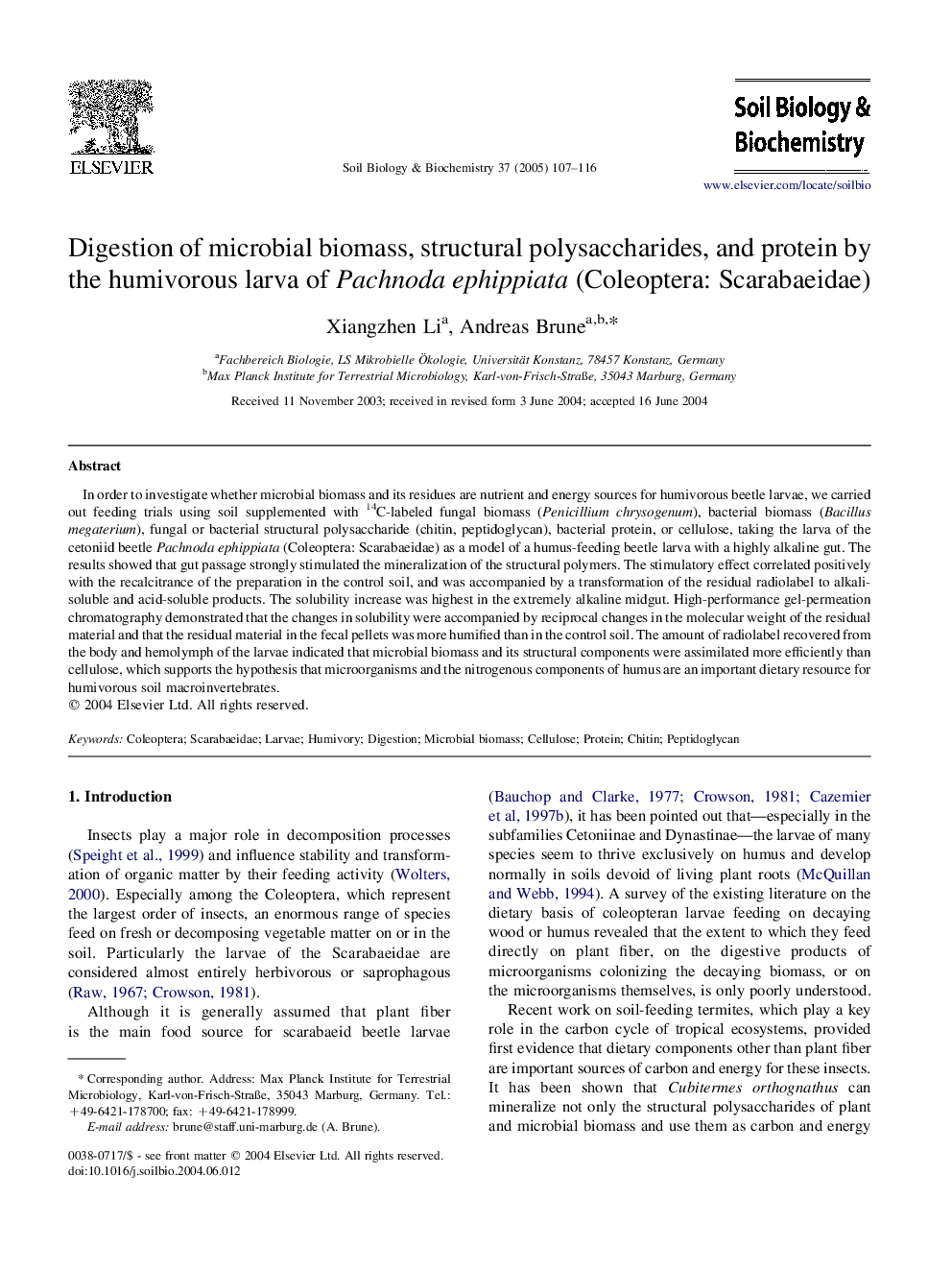| Article ID | Journal | Published Year | Pages | File Type |
|---|---|---|---|---|
| 10846433 | Soil Biology and Biochemistry | 2005 | 10 Pages |
Abstract
In order to investigate whether microbial biomass and its residues are nutrient and energy sources for humivorous beetle larvae, we carried out feeding trials using soil supplemented with 14C-labeled fungal biomass (Penicillium chrysogenum), bacterial biomass (Bacillus megaterium), fungal or bacterial structural polysaccharide (chitin, peptidoglycan), bacterial protein, or cellulose, taking the larva of the cetoniid beetle Pachnoda ephippiata (Coleoptera: Scarabaeidae) as a model of a humus-feeding beetle larva with a highly alkaline gut. The results showed that gut passage strongly stimulated the mineralization of the structural polymers. The stimulatory effect correlated positively with the recalcitrance of the preparation in the control soil, and was accompanied by a transformation of the residual radiolabel to alkali-soluble and acid-soluble products. The solubility increase was highest in the extremely alkaline midgut. High-performance gel-permeation chromatography demonstrated that the changes in solubility were accompanied by reciprocal changes in the molecular weight of the residual material and that the residual material in the fecal pellets was more humified than in the control soil. The amount of radiolabel recovered from the body and hemolymph of the larvae indicated that microbial biomass and its structural components were assimilated more efficiently than cellulose, which supports the hypothesis that microorganisms and the nitrogenous components of humus are an important dietary resource for humivorous soil macroinvertebrates.
Related Topics
Life Sciences
Agricultural and Biological Sciences
Soil Science
Authors
Xiangzhen Li, Andreas Brune,
